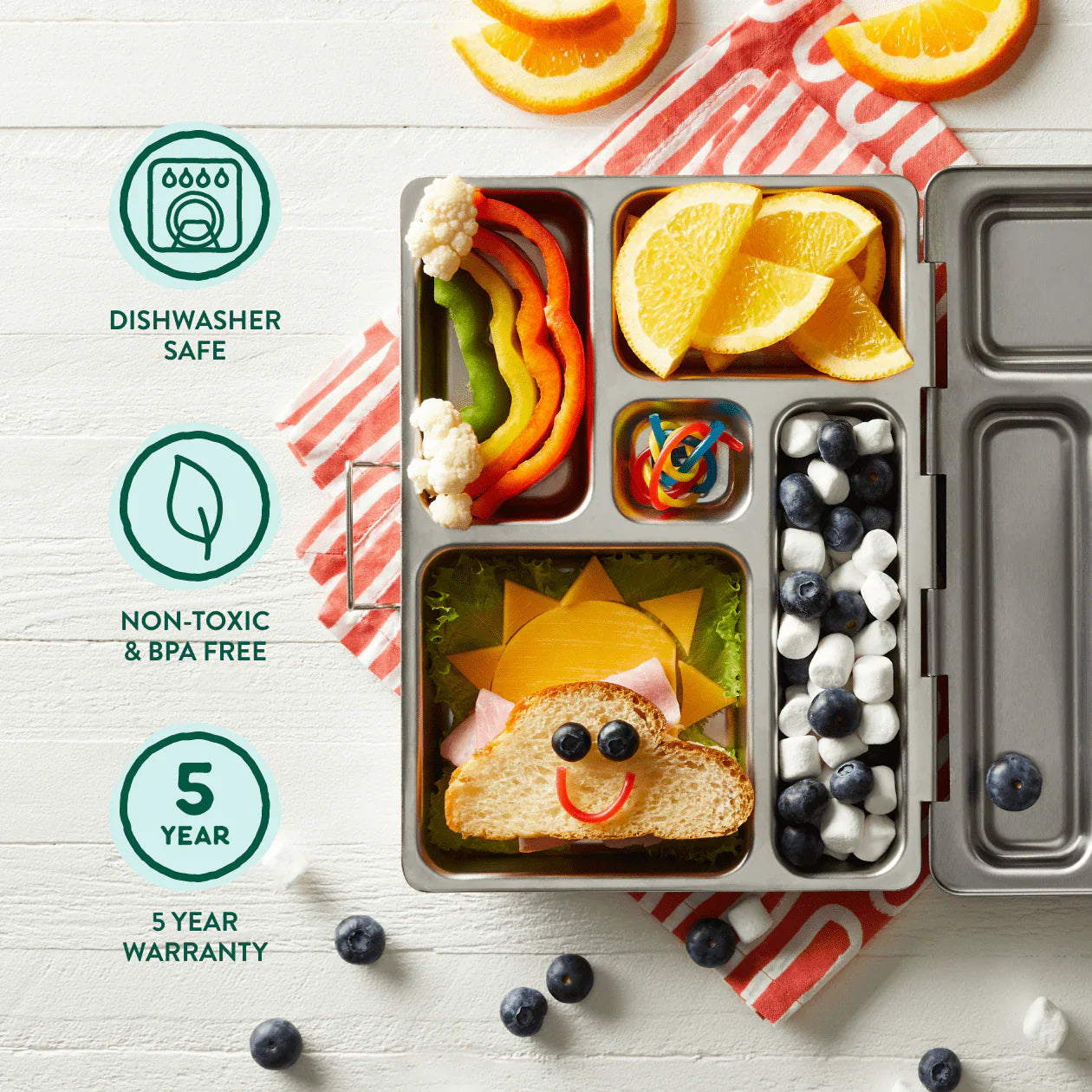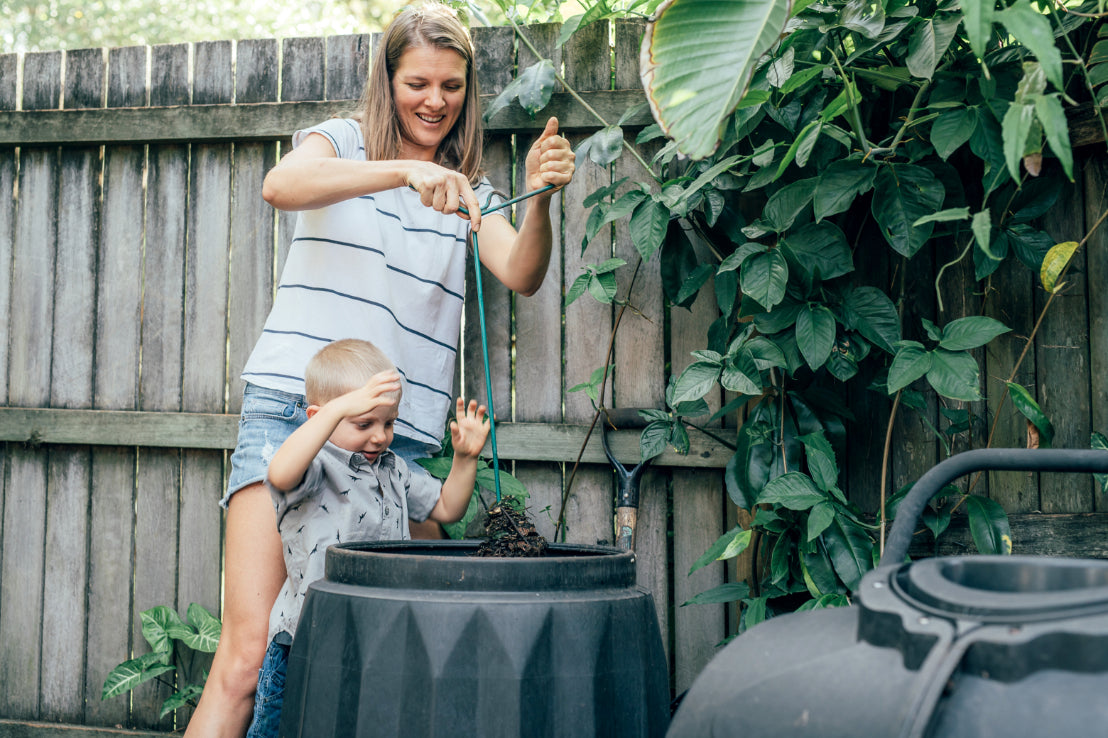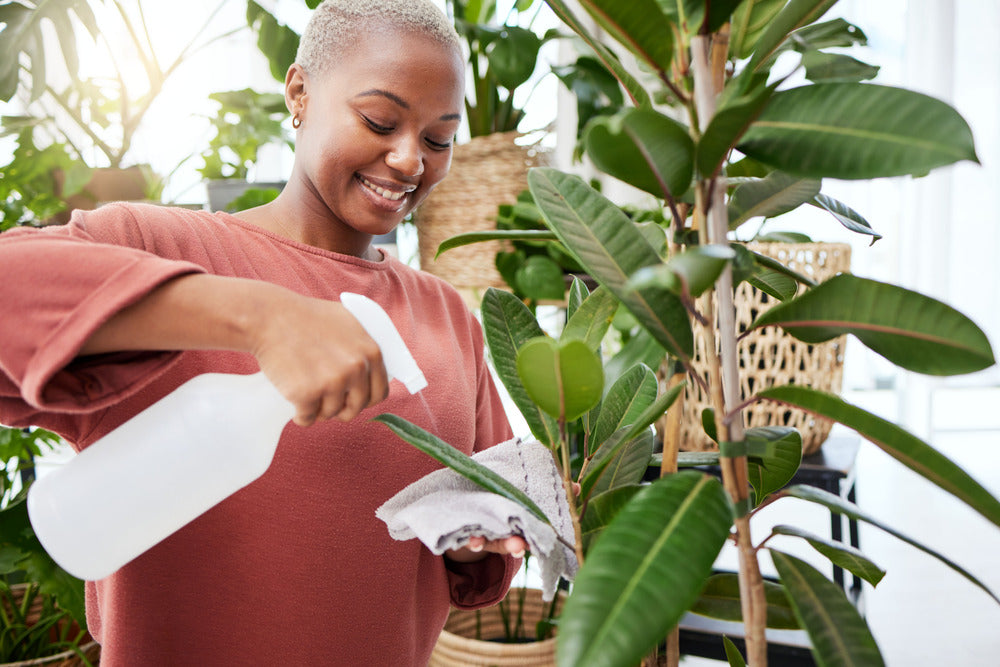Packing school lunches shouldn’t mean mountains of plastic, mystery food stains, or tiny wrappers scattered all over backpacks. But for many families, the morning lunch-packing scramble becomes a convenience trap: grab the single-use snack packs, throw in a juice box, wrap a sandwich in cling wrap, and go.
We get it. It’s fast. It’s easy. It’s familiar.
But it’s also wasteful—and with a few small swaps, you can make lunchtime better for your kid and the planet. Bonus: many of these changes make packing faster, cleaner, and more fun.
So let’s break it down: how do you pack an eco-friendly lunch for school without losing your mind? It’s easier than you think.
Step One: Skip the Single-Use Stuff
Most lunch waste comes from the same usual suspects: plastic wrap, foil, zip-top bags, pre-packaged snacks, and juice boxes. These items are made to be tossed, and they’re often not recyclable—especially once they’re smeared with peanut butter or cookie crumbs.
When you ditch disposables, you’re not only reducing trash—you’re also investing in reusable tools that make lunches more organized, fresher, and less likely to end up smashed at the bottom of a backpack.
Swapping out single-use items doesn’t mean you need to overhaul everything overnight. Start small. Maybe it’s just a reusable snack bag or ditching juice boxes in favor of a refillable bottle. Each swap matters.

Choose the Right Lunch Containers
Let’s talk gear. A well-packed, low-waste lunch starts with the right containers. Look for materials that are durable, safe, and easy to clean. Stainless steel, bamboo, and BPA-free plastic containers all get the job done—just skip anything flimsy that cracks after a few uses.
At Marley's Monsters, we love pairing reusable snack bags with leak-proof containers to keep lunches tidy and separated. Bento-style boxes are another great option—they encourage variety and cut down on the need for additional baggies or wrap.
Wraps and sandwiches? Keep them fresh with beeswax wraps or reusable bowl covers. These mold to food easily and keep things from drying out, without relying on plastic wrap or foil.
Pack Real Food, Not Packaging
You know those snack packs that cost three times as much for a handful of crackers? They’re wrapped in layers of plastic and often contain preservatives to keep them shelf-stable. Skip ‘em. Instead, buy snacks in bulk and portion them into reusable containers.
Not only is this way less wasteful, but it also saves money and lets you control ingredients. You can toss in fresh fruit, homemade trail mix, or even last night’s leftovers—just reheat and send in a thermos.
A low-waste lunch doesn’t have to be fancy. It just has to be food your kid will actually eat, packed in a way that doesn’t involve tossing four wrappers in the trash.
Don’t Forget the Reusables
When it comes to school lunches, reusables aren’t just for storage. They can replace almost every disposable item in your kid’s lunch routine—from utensils to napkins to drink containers.
That’s where our tried-and-true lineup of reusables comes in handy:
-
Reusable Snack Bags: Fabric pouches lined with waterproof material, perfect for crackers, grapes, or sandwiches. Toss them in the wash and use them all year long.
-
Cloth Napkins: Way cuter than paper towels and actually absorbent. Use a cotton flannel napkin that matches your kid’s lunchbox vibe.
-
Utensil Sets: Skip the plastic forks and keep a reusable set (metal, bamboo, or silicone) in their lunch bag. It’s easy to wash and way more sturdy.
-
Reusable Bowl Covers or Beeswax Wraps: Great for sandwiches, fruit, or even covering leftovers in a thermos-free setup.
-
Refillable Water Bottles: No juice boxes needed—just water, milk, or homemade drinks in a stainless steel bottle or leak-proof thermos.
Keep It Kid-Friendly
The trick to a successful eco-lunch? Make it something your kid will actually eat—and want to help pack. That means involving them in the process. Let them choose their favorite reusable bag patterns, pick what snacks go into each container, and help clean up afterward.
If you’re worried they’ll toss a cloth napkin or reusable utensil by mistake, try labeling items with their name or choosing a brightly colored set that stands out. Some parents even use a quick “packing checklist” taped inside the lunchbox as a reminder.
When kids feel ownership over their lunch, they’re more likely to bring everything home—and less likely to swap your organic fruit leather for a mystery bar in the cafeteria.
Pack a Waste-Free Lunch Like a Pro
To keep things simple, here’s a quick list of low-waste lunchbox essentials:
-
Main container: Bento box, stainless steel container, or divided lunchbox to hold the full meal
-
Reusable snack bags: For dry snacks, fruits, or half sandwiches
-
Beeswax wraps or reusable bowl covers: To keep sandwiches fresh without plastic wrap
-
Cloth napkin: Soft, washable, and way more stylish than paper
-
Reusable utensils: Fork, spoon, or chopsticks that can live in the lunchbox
-
Refillable water bottle: Ditch the juice boxes and reduce sugar and waste
-
Wet bag or drawstring pouch: To store used napkins, wraps, or cutlery until they get washed

Bonus: It’s Cheaper in the Long Run
Sure, the up-front cost of a reusable lunch setup might feel like more than grabbing a box of plastic baggies. But let’s do the math: most kids eat about 180 school lunches a year. Multiply that by the number of bags, napkins, wraps, and juice boxes used each day—and you’re looking at hundreds of dollars and pounds of waste.
Reusable lunch gear pays for itself quickly. And you don’t have to keep rebuying every week, which means fewer last-minute grocery runs and less stress overall. Wins all around.
Teaching Sustainability, One Lunch at a Time
Packing a waste-free lunch isn’t just a habit—it’s a hands-on way to teach your kids about sustainability, mindfulness, and responsibility. It opens up conversations about where our stuff comes from, where it goes when we’re done with it, and how small choices can add up to big change.
And hey—when their friends start asking where they got their rad mushroom-print snack bag or rainbow napkin? That’s the ripple effect in action.
Want to stock up on lunch essentials that are cute and compost-conscious? Check out our Zero-Waste Kitchen Collection to build a setup that’s good for your family—and even better for the planet.




